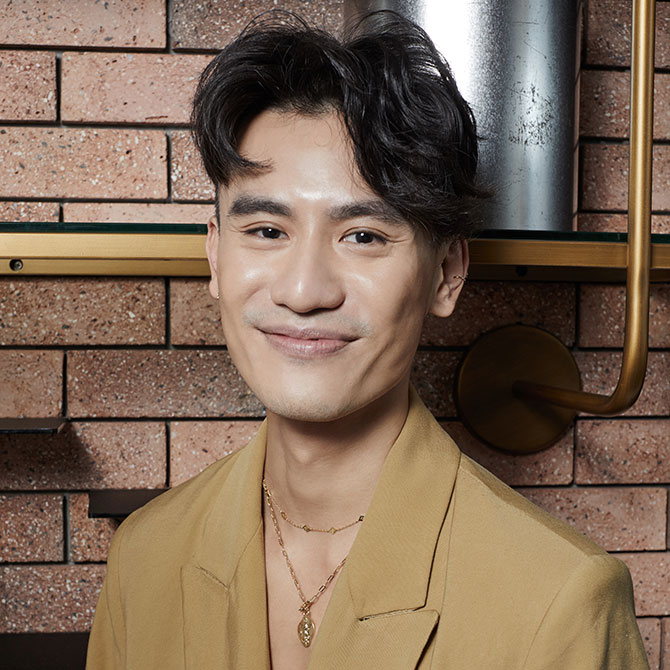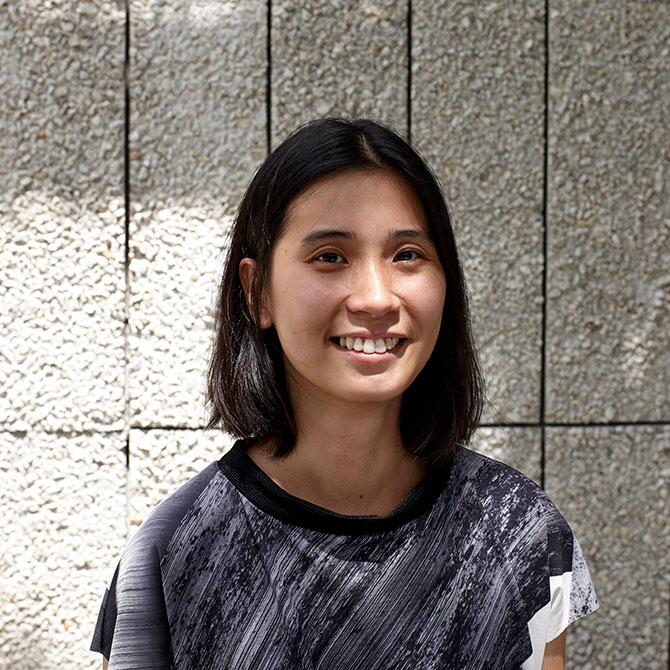Ask An Interior Designer: What are the current trends in interior design?
Details maketh design

As the number of residential and commercial projects in Malaysia continue to pick up after the pandemic, interior designers are hot in demand for their services in optimising these spaces. This is all the more bolstered by the current social media age, whereby consumers are more aware of and drawn by appealing aesthetics.
However, the world of interior design comes with its own set of challenges and misconceptions behind the artistic front. With that in mind, we speak to Adrien Kent (one-half of local design firm Studio Kanta), Amy Liang (of CocoKacang), and Syaza Saifuddin (AKA @syazaofalltrades on Instagram) to learn more about the ins and outs of the industry.

Adrien Kent of Studio Kanta

Tell us how you developed an interest in interior design.
Funny story–it all started from playing countless hours of The Sims. I developed a knack for designing homes in the game, and even helped design my siblings’ and friends’ homes in the game!
How would you describe your design style?
I’m quite minimal in my overall approach. There’s a softness in my colour palette, and I often gravitate towards more natural and organic forms.
What are the current trends in interior design?
Trends are extremely different in different types of interiors—a residential trend this year may be a complete 180 from a commercial project’s trend. But one of the most exciting approaches I have observed recently would be the extreme contrast of an austere material (such a stainless steel) against something whimsical (pink fur, perhaps?)
View this post on Instagram
In the world of social media, interior design plays a crucial role for brands to market themselves. How has this influenced the industry and professionals such as yourself?
What I have seen and experienced from this, is that clients (and the general public) are now more well-versed and aware of composition. It is easier to convey our ideas of “moments” when a client is able to picture it from 2D to 3D, and vice versa.
What advice do you have when it comes to the interior design process?
Always have a narrative. Much like a brand persona, interior design can also take form in stories, and take inspiration from movies and song lyrics. (This also makes great titles for presentation decks!)
View this post on Instagram
Have you come across any misconceptions about your job/industry?
Yes, it isn’t as glamorous as one might think—the design industry involves business development, financial strategies, risk management, problem-solving, and a whole lot of people management. It encompasses so many layers of daily life—and that’s why I love it.
What are some challenges you’ve faced as an interior designer, especially in recent years?
The biggest challenge during the pandemic would be construction timelines. Many buildings have implemented new rules, and this usually takes up way more time and prolongs the construction period. I’ve found this process very cumbersome, as nobody likes delays in this industry.
View this post on Instagram
What is the most fulfilling part of your job?
I like seeing how things come together at the end, when everyone comes together to pull their weight in getting it done. Sometimes the best part of the job isn’t the actual space, but the people in it. And of course, having a celebratory drink with them!
Follow Adrien’s studio on Instagram (@studiokanta) for more interior design inspiration.

Amy Liang of CocoKacang

Tell us how you developed an interest in interior design.
Since I was young, one of my dreams was to open a bookstore, so I thought that if I study interior design, then I can design my own bookstore in the future.
How would you describe your design style?
I would prefer not to fix a design style to myself, I feel that would set a limitation on myself. I hope that through learning and gaining experience, I can continuously become better.
What are the current trends in interior design?
I think there are different trends in different places. But I prefer to focus on a good design rather than a trendy design, and I think good design should be timeless. I like the approach of this German industrial designer named Dieter Rams, who always questions, “Is my design a good design?” and his answer is determined by the 10 principles below:
- Good design is innovative.
- Good design makes a product useful.
- Good design is aesthetic.
- Good design makes a product understandable.
- Good design is unobtrusive.
- Good design is honest.
- Good design is long-lasting.
- Good design is thorough down to the last detail.
- Good design is environmentally friendly.
- Good design is as little design as possible.
Based on these 10 principles, I know I still have a lot to learn. Powerful design doesn’t look like it has been designed—it just looks natural, comfortable, and blends into our daily life or environment well.
View this post on Instagram
In the world of social media, interior design plays a crucial role for brands to market themselves. How has this influenced the industry and professionals such as yourself?
There are always two sides to everything. I would say the positive side is, through the world of social media, now every individual can create a platform to show their creativity across the globe.
What advice do you have when it comes to the interior design process?
As design can be super subjective, having a like-minded team is very important.
View this post on Instagram
Have you come across any misconceptions about your job/industry?
Yes, I think people often think that “aesthetic” is important in design industries, but it may not always be a priority. This can be minimised or avoided if we treat design as a solution or improvement to an issue in daily life. Besides the concept, we should consider the design objective, then we will have a clearer idea of what we want the design to do. Other factors including the site, the neighbourhood, the existing environment, the sun direction, the soil, and the people (operator and end-user) are important too.
What are some challenges you’ve faced as an interior designer, especially in recent years?
I would say regardless of past or present, one challenge has always been the timeline, especially for commercial projects. But in order to make the design better, we will always need time to polish and develop the design and details, while understanding the site and the nature of the business (such as their mission and vision).
View this post on Instagram
What is the most fulfilling part of your job?
I think as a designer, the most magical part is when I see my design transform from concept into reality. And the most touching part is when I see strangers using the space or furniture in my designs, although I know some of them might curse me if the design/details are not thoughtful enough.
Follow Amy on Instagram (@cocokacang_design) for more interior design inspiration.

Syaza Saifuddin

How did you develop an interest in interior design?
As a ‘90s kid, I think it started with my Polly Pockets and dollhouses when I was younger. How these toys were built, how they fold and expand, and their proportions were something I really found interesting. As I grew older, my interest in the arts also became more prominent, and by the time I had to make a decision to pursue my tertiary education, I felt like interior design might be a good fit for me. I was very lucky to have supportive parents who also helped me explore my hobbies.
How would you describe your design style?
I would say it’s a little bit retro and organic. I do love some quirky details as special features.
View this post on Instagram
What are the current trends in interior design?
The most prominent ones I’ve seen as of late are biomorphic and biophilic designs. Curves and organic shapes have been a reoccurring theme in designs, whether in furniture, openings, windows, or ornaments. More so on furniture—I noticed a peaking interest in irregular-shaped design. People are also getting more conscious about the environment and its relationship with buildings so I do see newer projects incorporating greenery and green pockets in their building planning. It’s a thoughtful trend that I hope will carry on for many years to come.
In the world of social media, interior design plays a crucial role for brands to market themselves. How has this influenced the industry and professionals such as yourself?
Personally, I think more residential buildings, cafes, restaurants, and other spaces are levelling up their interior design game. That’s really great for our community—it keeps us on our toes and allows us to explore more materials, methods, and styles. It also means a lot more people are taking risks and asking questions about design in their personal space. I think it’s a good opportunity to educate people on how it can work (or not) in different settings. Everything is a lot more accessible now, so you get to interact and build connections with brands/products that you might not know of. For me, I think it allows my audience to realise the reality of our line of work and it makes it easier to communicate with them.
What advice do you have when it comes to the interior design process?
Do what works for you. Interior design—be it for a commercial or private space—should accommodate and serve your purpose. It’s not a one size fits all kind of deal. Your space should reflect your style, lifestyle, and personality. It would very much vary for every situation so my advice would be to work out something that would make things convenient and aesthetically pleasing to you so that you truly optimise the potential of the area that you have.
View this post on Instagram
Have you come across any misconceptions about your job/role/industry?
Yes! A lot of people assume that designers are stuck up or stand-off-ish. They also assume that designers don’t do the dirty work and only wear nice clothes to an air-conditioned office. These are all very untrue. No doubt there are individuals like that in our industry, but a lot of us are also accommodating and go to unglamorous places too. We source for a lot of the materials needed like factories and supplier offices; we do drawings; we visit sites. It’s a lot more than just matching fabrics and playing with paints. There’s a technical aspect to it that not many people discuss on a day-to-day basis.
What are some challenges you’ve faced as an interior designer, especially in recent years?
There are many—startups in any industry are hard, and the construction world is no different. I would say juggling the hats especially when you’re a freelancer or work independently. It can be tricky to balance or allocate your time for several tasks. Thankfully, I’m surrounded by my team members who are able to help and are just as diverse and well-versed (if not better) than me to get the job done. The most recent challenge we’re facing is the shift in processes, lead time, and SOPs which we need to abide by with the pandemic still being in the picture.

What is the most fulfilling part of your job?
Designers are meant to fix problems, so whenever I get to solve problems or come up with a better solution for my client is when I feel most fulfilled. We always try to deliver what is best for our clients within the parameters that are set by them, so whenever we manage to provide a workable option to bring what they have in their minds to life, it’s a very humbling and rewarding experience.
Follow Syaza on Instagram (@syazaofalltrades) for more interior design inspiration.
Read more Ask A __ stories here.
| SHARE THE STORY | |
| Explore More |



